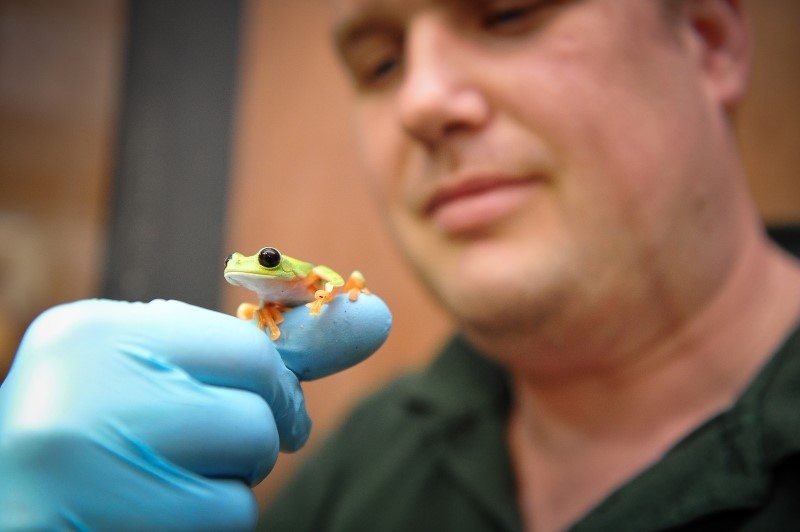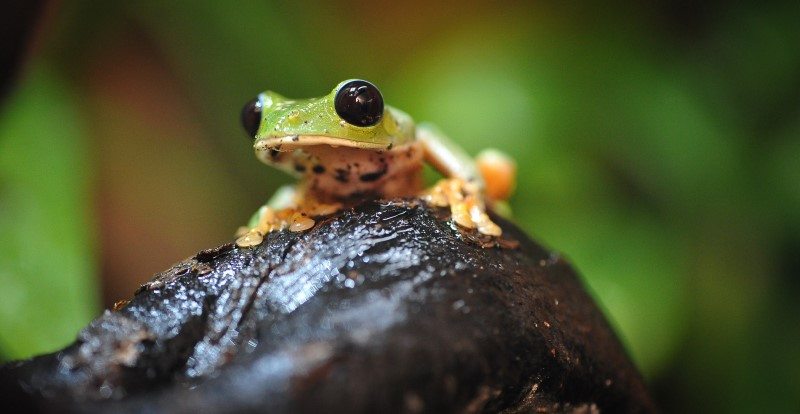“Black-eyed tree frogs are part of a very important research project here at Chester Zoo, looking into their dietary requirements. In fact the zoo’s Nutritionist, Andrea Fidgett will be blogging more information about them next week.
“The research Andrea has been involved in supports our aims for this project – which are to develop husbandry skills with the species which we can then transfer and share with colleagues at the Belize Zoo and the Belize Vivarium – two organisations keen to be involved in a zoo breeding and possible reintroduction program.

“Like many amphibians these guys can change colour to blend in with the foliage around them – check out the difference in the two photos. However some frogs, including black-eyed tree frogs have a special skin pigment that allows them to reflect UV light at the same level as the leaves, making them even more difficult to distinguish. The other benefit of this skin pigment is that it allows then to sit on top of leaves without getting too hot or burnt – it’s like having built in factor50.
“Now classed as critically endangered by the IUCN, the black-eyed tree frog was once found in Mexico, Honduras, Nicaragua, Guatemala and Belize but has become scarce with some populations vanishing entirely.

“Over the next few months we’re looking into two more research programs both of which will help us develop a conservation action plan for the species within Belize. Out in the wild we need to work with our partners to do some more field studies in order to establish the distribution of the species, identify the presence of Chytrid fungus and to then look for habitats suitable for the possible translocation or reintroduction of the species.
“And if you want to see the frogs and their amazing skin in action, they can be found in Chester Zoo’s Tropical Realm. Have a look and see how many you can spot. I think you’ll agree they’re pretty stunning frogs and definitely worth protecting from extinction.”
I am Ben Baker, lower vertebrates & invertebrates team manager at Chester Zoo, and I Act for Wildlife